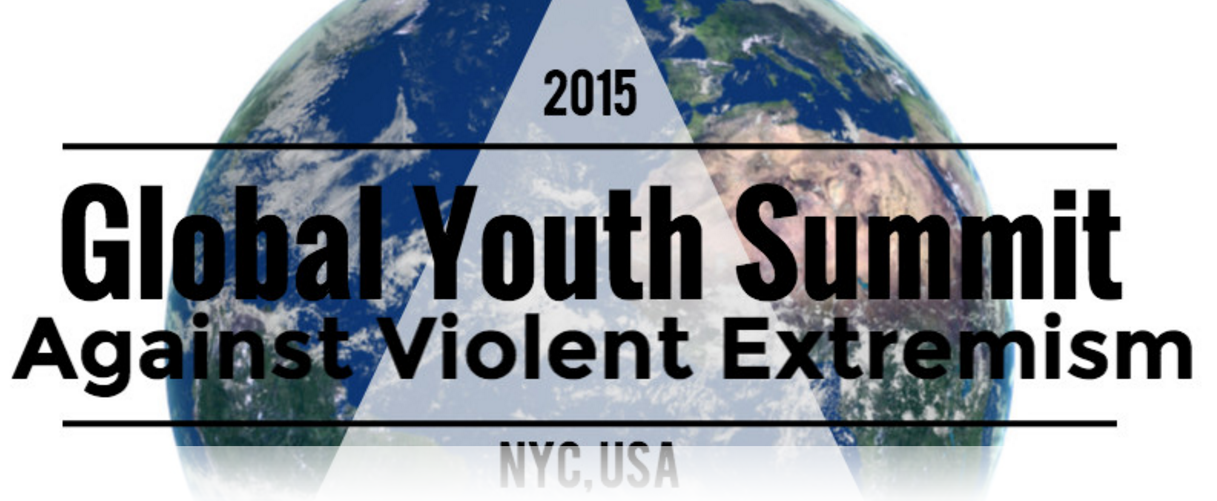The Importance of Being Young

Last month, I attended a briefing hosted by Senator Cory Booker of New Jersey centered around the Global Youth Summit Against Violent Extremism, a conference hosted in conjunction with the 70th United Nations General Assembly. Senator Booker has prioritized countering the digital advance of Da’ish (or the Islamic State/IS), co-authoring a letter to President Obama and purusing legislation aimed at bolstering the US’s online strategies for counterterrorism.
Addressing the audience, were student-activist Essma Bengabsia, Counter Extremism Project’s (CEP) communications director Steven Cohen, Search for Common Ground’s (SfCG) director of global affairs Mike Jobbins, and Mercy Corps’s senior policy advisor Madeline Rose. All took turns sharing their experiences at the summit, then interacted with questions from the audience. The discussion centered around current strategies for countering violent extremism and proposals for including youth, government, and the private sector for a more effective campaign.
Essma Bengabsia is currently a student at New York University’s Stern School of Business, but has already accumulated a treasure trove of experience in human rights activism and community development. The young organizer discovered that pro-Da’ish Twitter accounts post to social media 90,000 times each day that have negligible resistance or counter-tweets. To more effectively respond, she called for a multi-sector response to such extremism, urging the private sector to provide funding and additional resources for CVE and governments to create policy and offer expertise. According to Essma, communities should organize volunteering and service projects for the youth to promote local investment and to build resistance to extremist recruiters spreading propaganda.
"Communities should organize volunteering and service projects for the youth to promote local investment and to build resistance to extremist recruiters spreading propaganda."
Following Essma, Mike Jobbins from SfCG argued for a shift in the role of governments. Typically, government action is reactive in nature, but CVE by necessity requires long-term proactive engagement. He said that youths may be radical by virtue of being young, but that shouldn’t be perceived as a problem to solve. A society’s youth are its only hope for the future, Jobbins argued, and should be included in their community’s decision-making. By recognizing their contributions and potential and partnering with them to grapple with issues, youths can be a huge asset to any CVE effort. Jobbins backed up his claims by referencing a project in Kyrgyzstan in which the government invited SfCG to conduct youth engagement to counter violent extremism. The Tunisian government requested a similar engagement with SfCG.
Steven Cohen of CEP then spoke about Digital Disruption, his group’s initiative to block extremists online directly, removing hundreds of user accounts and lobbying to change policies on violent content. CEP organized the summit for youth, seeing them as digital natives and the primary target for recruiters. Cohen called the summit a success as the youth leaders present interacted with and learned from each other. CEP also announced a new partnership with the State Department to scale ideas coming out of the summit to the tune of $100,000. Additionally, tweets related to the summit drew millions of impressions.
Finally, Madeline Rose of Mercy Corps addressed the ground-level efforts to reduce the harms of extremism. She dispelled the popularly-held belief that recruiters are paying their target demographic to join; salaries are only given to the recruiters based on their success. Instead, Da’ish finds new members by glorifying the conflict in Syria and selling false ideas about Da’ish’s work fighting Shia infidels and protecting Sunni women from violent oppression. In truth, IS does little for the welfare of women in captured territory. Poverty, Rose pointed out, has little sway with potential recruits; perceptions of injustice, previous exposure to violence and abuse, and a viable place to go are the leading factors in persuading the youth to take up arms, especially when exploited over social media. Humanitarian groups have withdrawn from IS-controlled zones and face prosecution if they’re perceived to be supporting terrorist activities, which only exacerbate the problems in the region. Rose had many action items to her solution for the crisis. First, she called on Congress to endorse the Amman Youth Declaration and USAID to allocate more resources to conflict management. Then she outlined operational plans for removing youth from Da’ish’s ranks and reintegrating them into society outside of a jail cell and for leveraging the nuances of social media to block recruitment efforts. Finally, Rose stated that a political solution is needed in Southwest Asia and North Africa to end the violence, but only with thorough inclusion of youth.
A fruitful discussion and a sunny day, for more I couldn’t ask. These experts provided many useful takeaways for the peacebuilding and democracy assistance spheres. Technology is much like a hammer, useful and productive, but possesses many unseemly capabilities as well. Only through including youth and providing them with meaningful opportunities can CVE projects succeed. The youth of a community are its future and should not be exploited for nefarious purposes. Heeding the expertise of people like these four panelists is highly recommended for governing bodies if they hope to effectively counter violent extremism.
